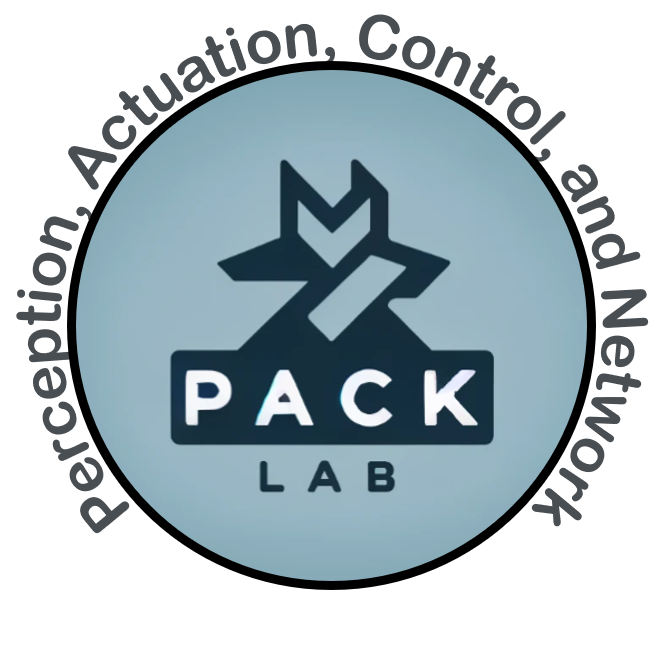Perception, Actuation, Control, and Network (PACK) Lab
Welcome to the PACK Lab!
The word “PACK” is the abbreviation of Perception, Actuation, Control, and Network. “PACK” are the major components of the research conducted in this lab. Pack is also used in phrase “pack of wolves”, which refers to the collective behavior of wolves.
The Grand Challenges
This world is facing many challenges, such as food security, traffic congestion, the aging population, human resources shortage, and insufficient capability of production.
Current Robot-Based Solutions
To solve these challenges, more and more robots are applied to assist with traditional labor-intensive tasks. For example, drones are widely used to collect field data in precision agriculture to replace conventional human data collection. There is no doubt that the robot-based solution has many strengths, with low fault rate, high efficiency, great precision, and endurance. Importantly, robots can replace humans to work in hazardous environments. However, robots are not perfect so far - they still have limitations. For example, some robots can only carry out specific objectives. And some robots need detailed path planning that may conflict with others if multiple robots are in the same workspace. So, how do we break through these limitations?
Robots as a PACK
One promising answer to this question is applying collaborative multi-agent systems. In nature, collective animal behaviors are important to defend against prey, search for food, and migrate for long distances. Inspired by the collective animal behaviors in nature, PACK lab is committed to providing solutions to current grand challenges using a swarm of drones to monitor the field and collect field data, a group of robot arms to perform complicated operations, and a collaboration of autonomous vehicles to provide a safer driving experience. These collective intelligent agents perform complex tasks beyond each individual’s capabilities.
Location
- ECS-215A (space for modeling, simulation, and computation)
- EN3-108 (space for experiment)
California State University, Long Beach
Resesarch Areas
- System and Control Theory
- Multi-Agent / Robot System
- Human-Robot / Swarm Interaction
- General Robotics
